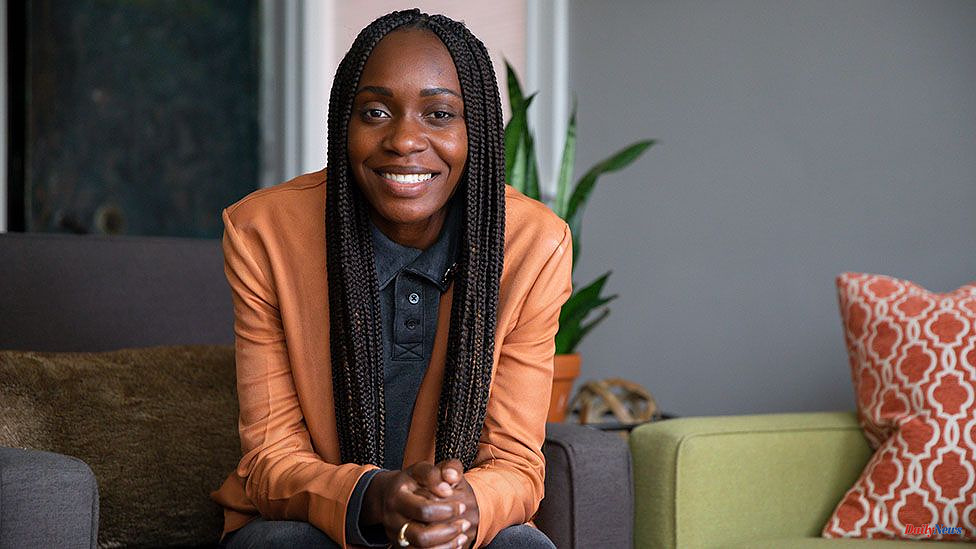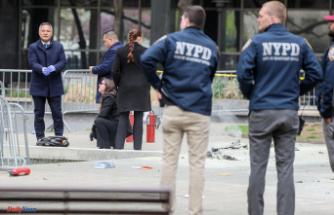Cynthia Chapple assumed she would take the photograph of a researcher professor and his staff when she was asked to assist. The professor was going to use the image for a grant application.
Ms Chapple was a chemistry researcher at an American university. She had never met his team personally and didn't interact with them directly. She was pulled alongside the team to the camera when she arrived to take the picture. She smiled and took the photo, before becoming confused.
She looked around and saw that the entire research team was composed of white men. She was the only black woman in this photo.
She says that this was an example of "Photoshop" diversity, where black women are used to photograph opportunities. "I was embarrassed."
The 31-year old grew up in an inner city neighborhood on the south side Chicago.
Her family consisted of seven siblings and she grew up in a large family. The entire universe was within two blocks. Her father was a security guard, and her mother was a nurse assistant. Cynthia went to school every day, and her extended family and friends lived just five minutes away. Evenings were spent exploring the neighborhood.
She says she would create a list of ways to improve the neighborhood. "I would count how many liquor stores or unutilized lots are in the area and make suggestions on what could be used to replace them." I was data collection."
At nine years old, she discovered a passion for maths from a teacher.
"Mr Estes was my young black teacher whom I wanted to impress. He was my entry into STEM (science technology engineering and mathematics).
He introduced her to science camps and extra-curricular clubs, and she fell in love with him.
She recalls that she was the only black girl at those clubs. "There wasn't really any STEM activities that you could do within my neighborhood." So I decided to leave my community on the south side and go to another place to learn about certain activities.
She didn't leave the south side of Chicago to find more women interested STEM. While she was completing her bachelor's degree in Chemistry at Purdue University in Indianapolis, she felt like she was still a minority. It was no different when she moved to another university to pursue her masters.
She says, "I was one among two American-born Black students."
She noticed another trend after she graduated as a research chemist. She couldn't imagine women of color, particularly black women, rising up in academia in the United States, especially STEM fields.
Cynthia claims that this is due to an "intersectional leaky pipe". Her spin on the so-called "leaky pipe", which she uses as a metaphor for the gradual loss of women in senior positions in science, technology engineering and mathematics (STEM), is Cynthia.
According to researchers, the "leaky pipeline" refers to women and women of color, who face many obstacles and barriers to progressing in their fields. These include childcare obligations and fewer opportunities for promotion.
Pew Research, 2021 states that only 9% of STEM-related workforce in the US was made up by blacks. This number has not changed since 2016.
According to the American Psychology Association (APA), women of color make up 2.3% of tenured (permanent), university teaching staff in the US. White women make up 23.4%.
While completing her master's degree in 2015, Cynthia had the idea to create a club that would bring more women into science. Black Girls Do STEM was established in St Louis, Missouri by 2018. She now calls it home.
Club members are middle- and high school black girls from inner cities who want to be emotionally engaged with science and use it in real life.
She says that classes are designed around the students' interests, needs, and likes. "We have classes teaching girls how to make lipbalm as part of a cosmetic chemical module or where we test their pH.
The fortnightly classes were once held in person, but they have been moved online during the pandemic.
She adds, "We want it be an immersive experience."
Black Girls Do STEM currently has around 100 girls. Ms Chapple expanded the program to include more black women scientists mentors. She also introduced classes to help the girls learn about resilience and setting boundaries.
She says, "Young Black women need a variety of tools to be successful in the workplace. We want to equip them for more than just academic success."
Cynthia hopes to expand this program across the country by inviting more than 160 girls to enroll in 2022 classes.
She says that inner-city urban communities are conducive to creativity. "We have more noise, pollution, and more people so we can find creative solutions for problems. The best music and fashion have been created by our communities. If given the chance, we may also be the most scientifically-minded people in the world.
Ms Chapple wants to also change science's inaccessible reputation.
Science is viewed as something that only the elite can master. She says that science is not something we can all learn. "You need to start young and give children a foundation so they can live up to our expectations."
This story is part the Generation Change series, which is a co-production of the BBC and Nobel Prize Outreach.
Cynthia's story, along with many others from young innovators in science, technology and engineering can be heard on Generation Change, BBC World Service.












